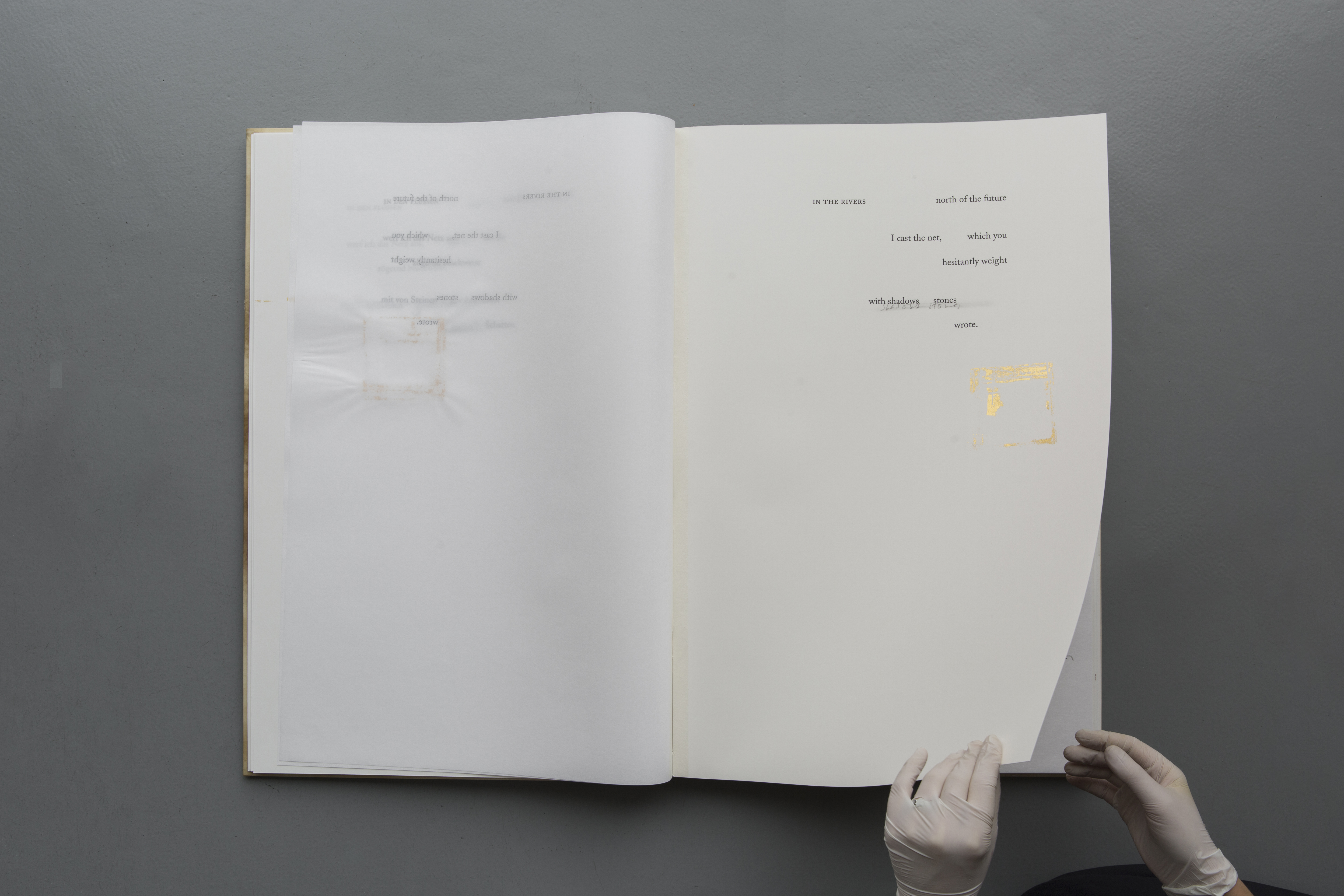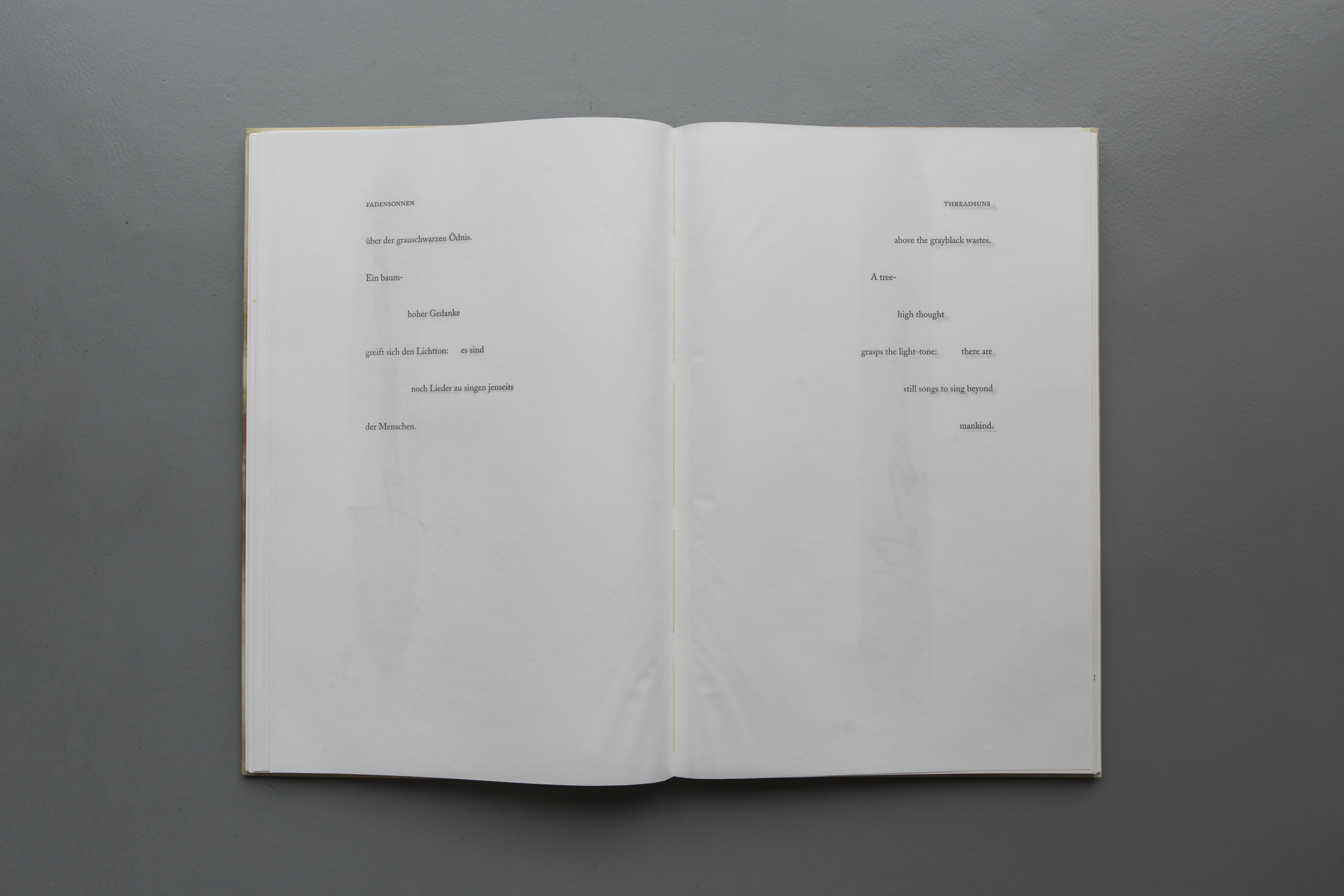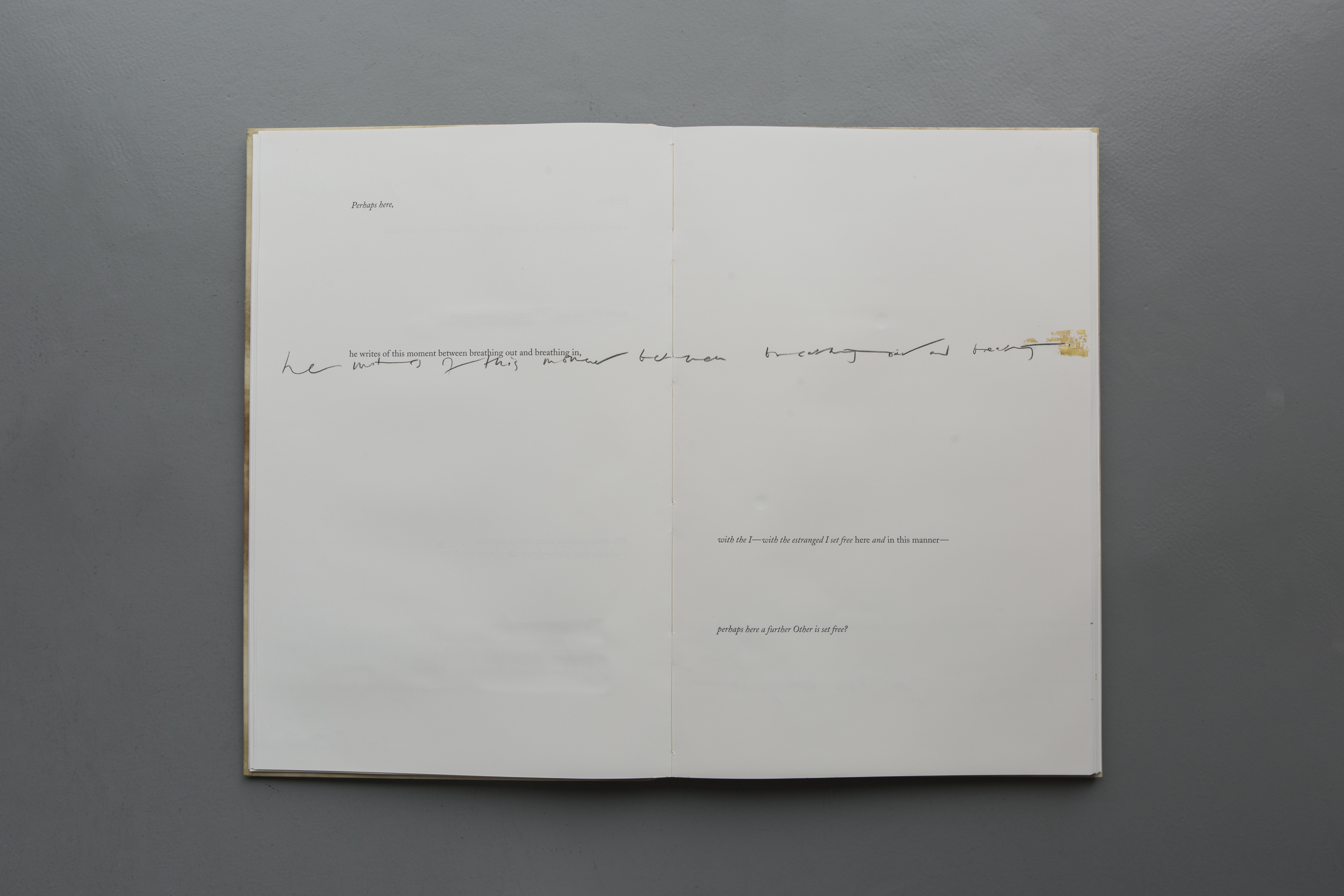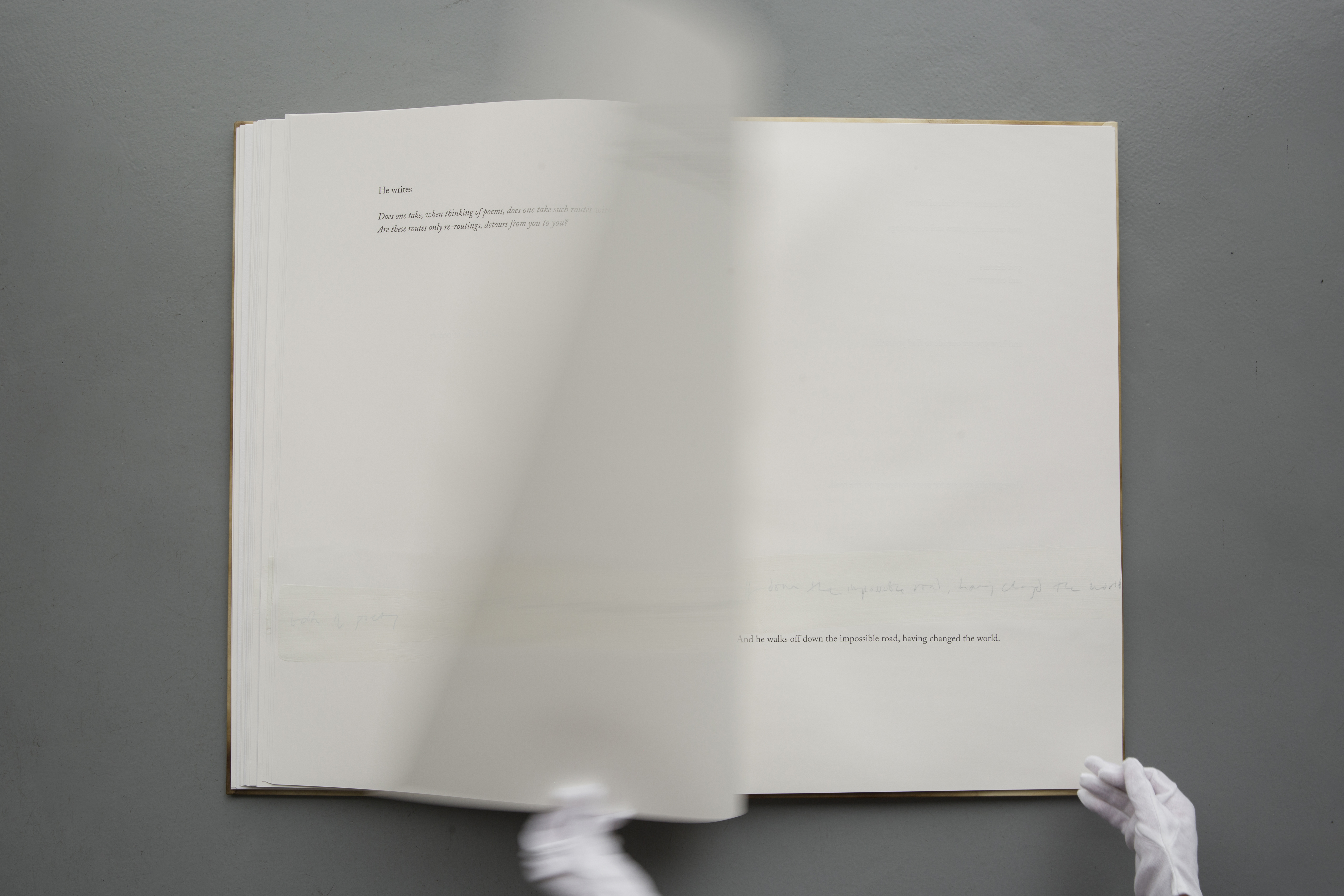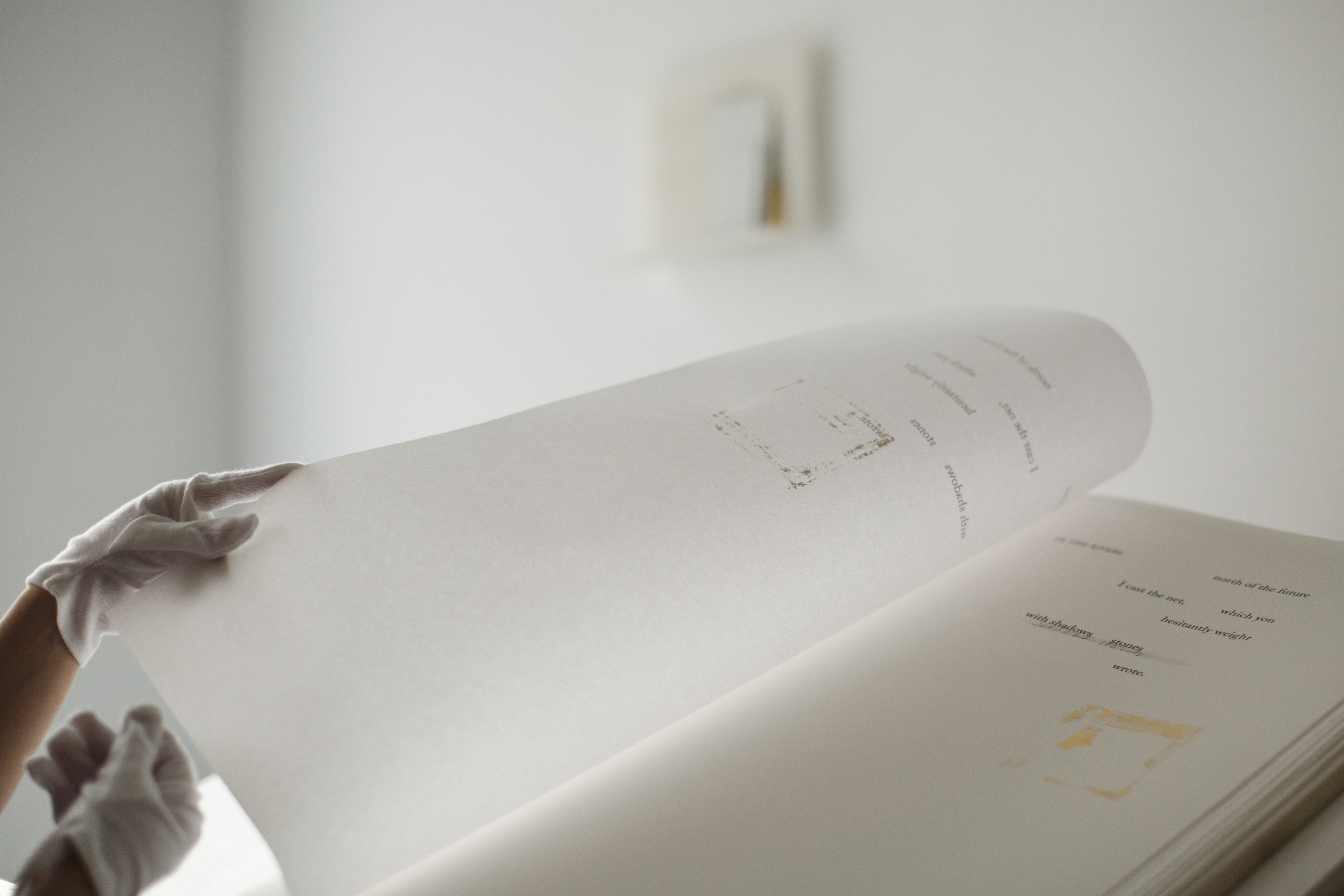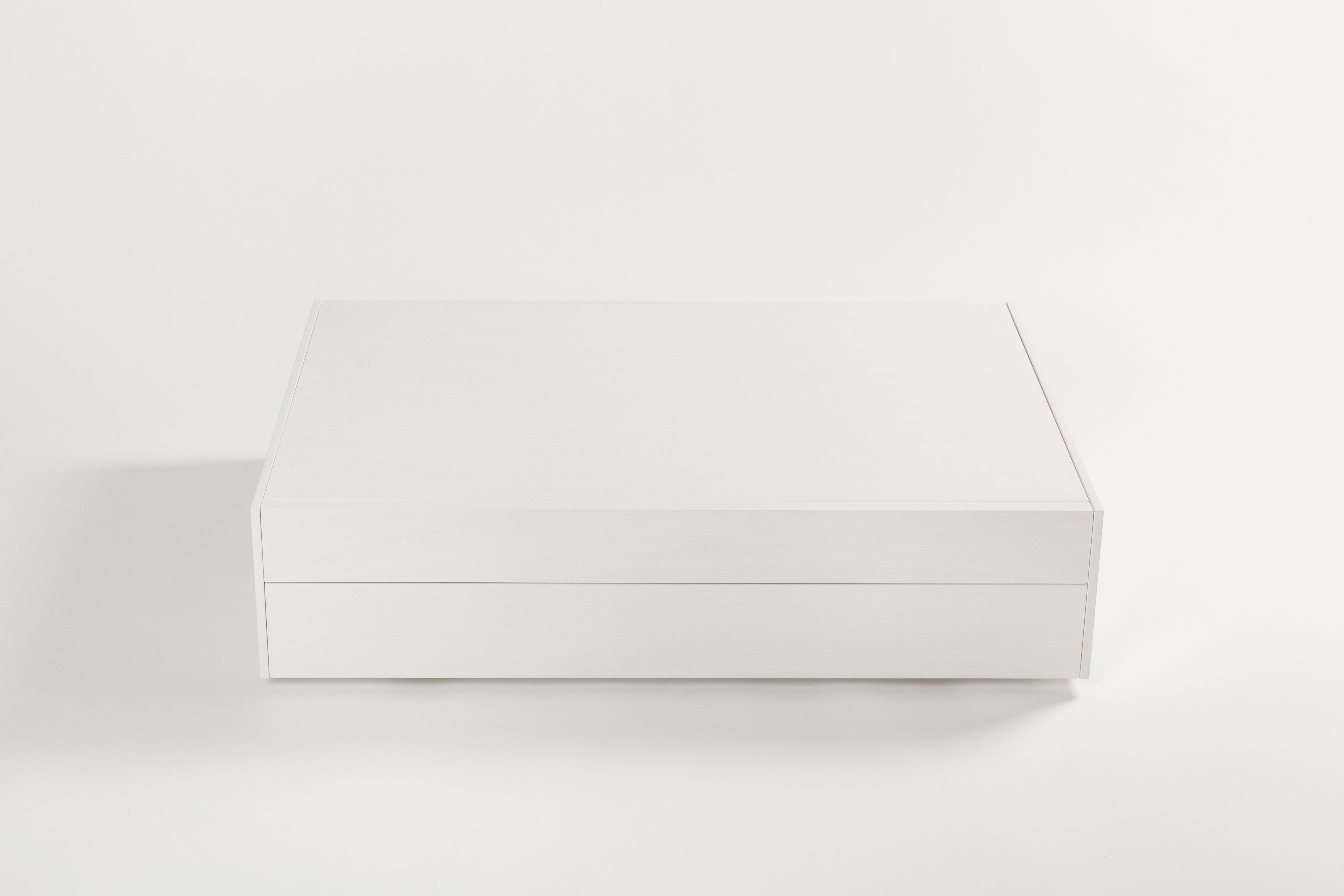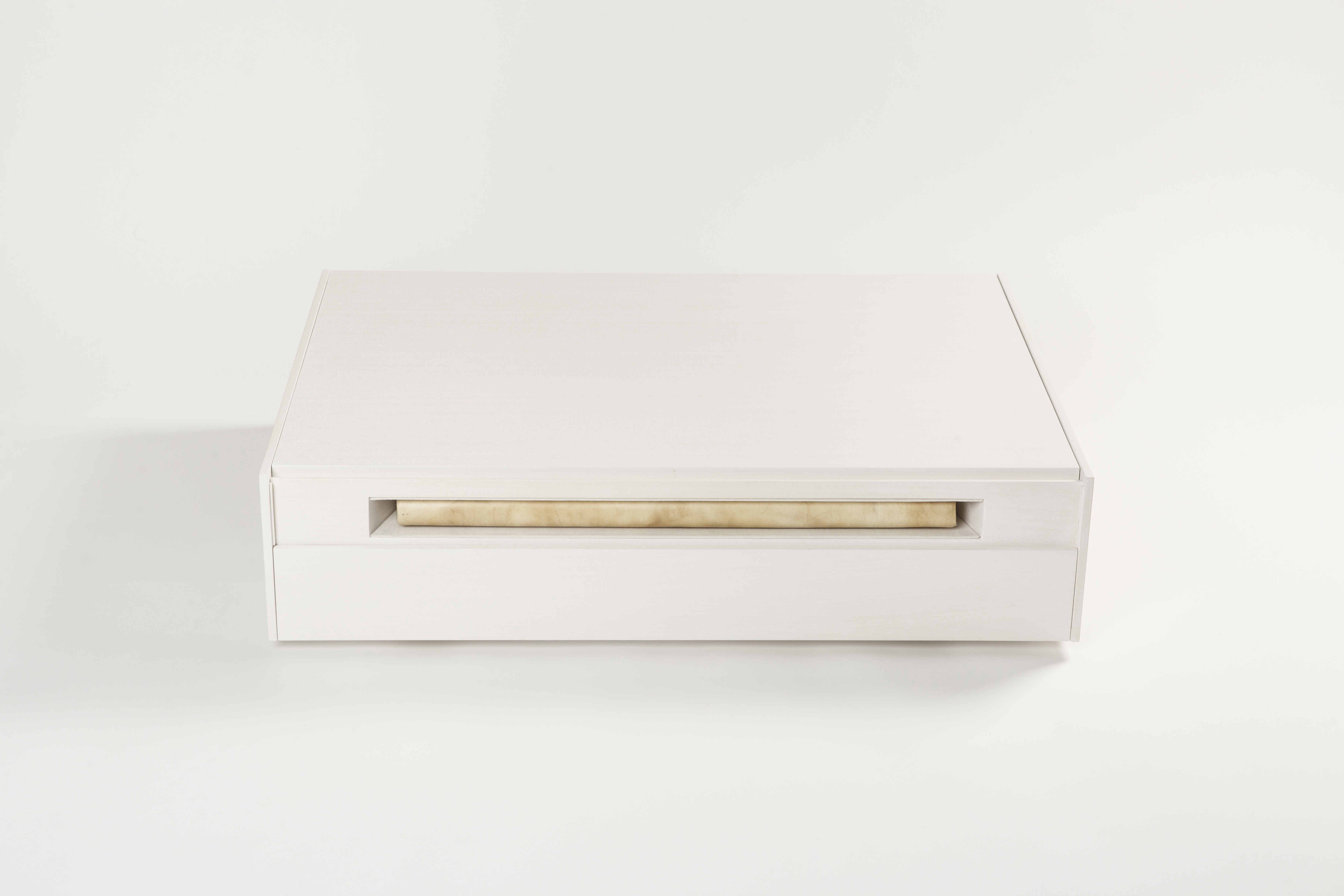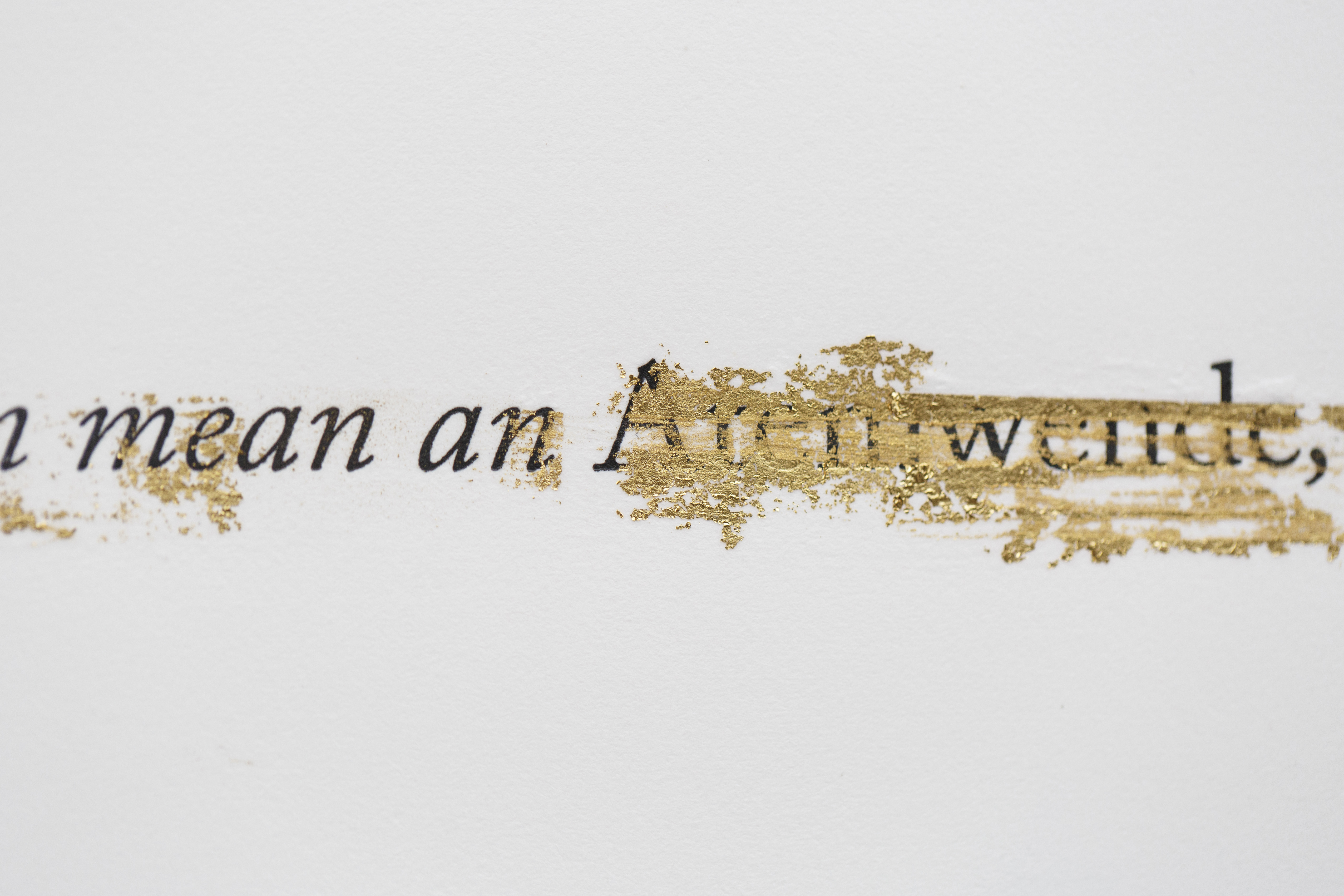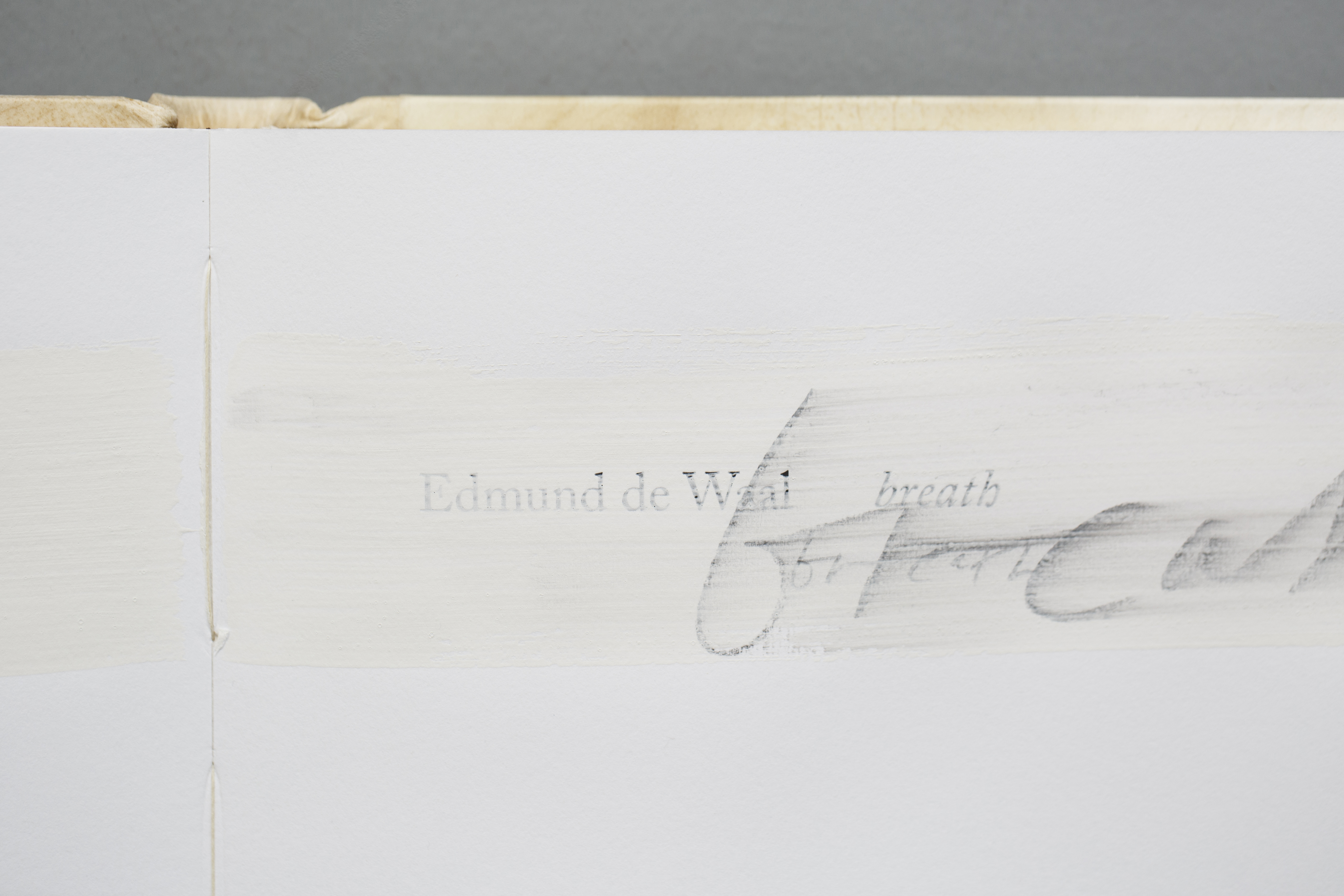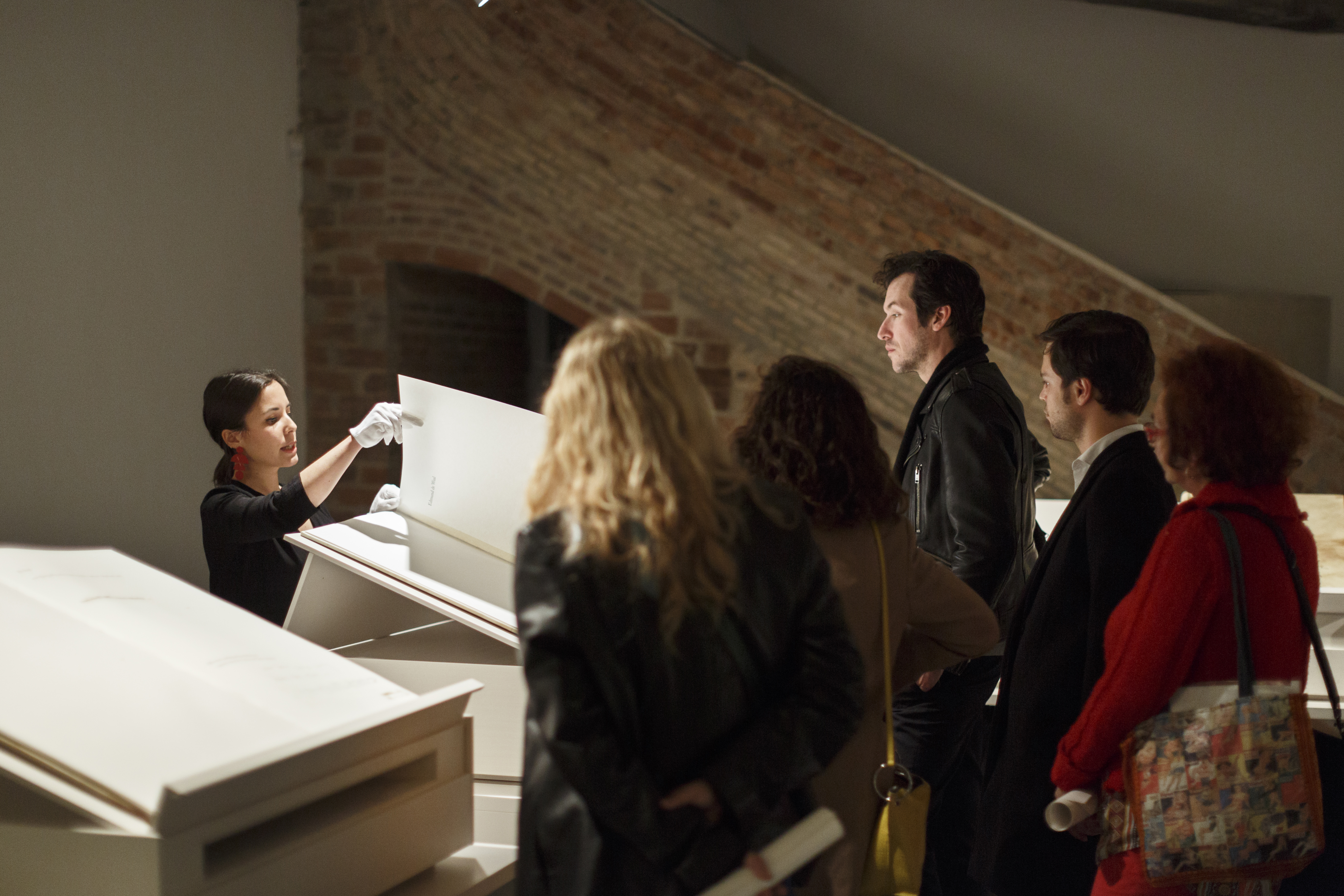
Edmund de Waal. breath
Created by De Waal as an eulogy to breathing and a tribute to Paul Celan, breath includes some of the poet’s last poems where ‘there is more white space than word’, according to De Waal.
The white page is a space for pausing, with scattered words as if caught in a moment of suspended breathing. Van de Graaf’s canon, commonly used in medieval book design — including Gutemberg’s Bible (1455) — provides the structure behind the text layout. Poems in German and their English translation face each other across the double spread: an allusion to the forced migration from East to West suffered by Celan’s family. The analogous journeys of both paper and porcelain are reflected in the choice of papers of Japanese, English and German origins. The text was set in Adobe Caslon and letterpress-printed. Once bound, the pages were approached as canvases by the artist, who intervened directly over the printed paper with kaolin, pencil and gold leaf.
A custom-made box that converts into a lectern holds the book and a porcelain and stone installation created by the artist. The resemblance to a medieval prayer book is an open invitation to aloud communal reading.
Created by De Waal as an eulogy to breathing and a tribute to Paul Celan, breath includes some of the poet’s last poems where ‘there is more white space than word’, according to De Waal.
The white page is a space for pausing, with scattered words as if caught in a moment of suspended breathing. Van de Graaf’s canon, commonly used in medieval book design — including Gutemberg’s Bible (1455) — provides the structure behind the text layout. Poems in German and their English translation face each other across the double spread: an allusion to the forced migration from East to West suffered by Celan’s family. The analogous journeys of both paper and porcelain are reflected in the choice of papers of Japanese, English and German origins. The text was set in Adobe Caslon and letterpress-printed. Once bound, the pages were approached as canvases by the artist, who intervened directly over the printed paper with kaolin, pencil and gold leaf.
A custom-made box that converts into a lectern holds the book and a porcelain and stone installation created by the artist. The resemblance to a medieval prayer book is an open invitation to aloud communal reading.
Edmund de Waal, breath. Madrid: Ivorypress, 2019.
Edition of 6 + 2 AP + 1 HC. Signed and numbered by the artist.
453 x 673 x 43 mm
104 pages
Design Edmund de Waal in collaboration with Joana Bravo
Printing Letterpress on Zerkall Litho IV 410, Tosa Shi, and G.F Smith Colorplan Ice White by Bookworks
Binding Springback binding, cover in natural calf vellum by Shepherds, Sangorski & Sutcliff
Pages treated with kaolin slip and gold leaf, overwritten with graphite pencil by Edmund de Waal. Flyleaves on Takeo Yomoushi
All photographs by Pablo Gómez-Ogando

